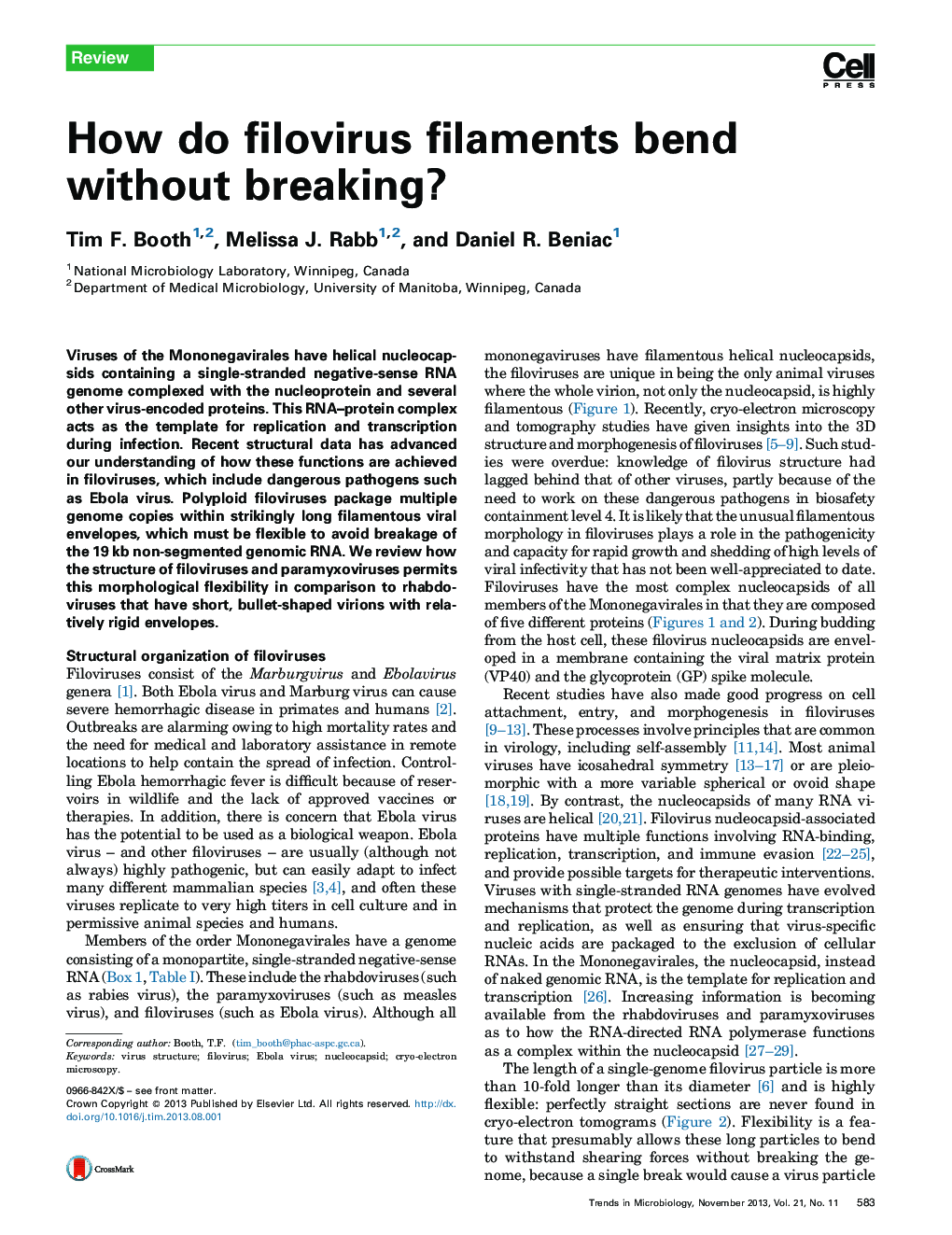| Article ID | Journal | Published Year | Pages | File Type |
|---|---|---|---|---|
| 3421850 | Trends in Microbiology | 2013 | 11 Pages |
•The monopartite genome of the Mononegavirales is coiled within a helical nucleocapsid during infection.•Filamentous filoviruses have multiple genome copies joined end-to-end in a modular fashion.•The outer helical layer of the filovirus nucleocapsid allows tight bending of the nucleocapsid.•Structural analysis shows how RNA transcription and replication is achieved while protecting the genome.
Viruses of the Mononegavirales have helical nucleocapsids containing a single-stranded negative-sense RNA genome complexed with the nucleoprotein and several other virus-encoded proteins. This RNA–protein complex acts as the template for replication and transcription during infection. Recent structural data has advanced our understanding of how these functions are achieved in filoviruses, which include dangerous pathogens such as Ebola virus. Polyploid filoviruses package multiple genome copies within strikingly long filamentous viral envelopes, which must be flexible to avoid breakage of the 19 kb non-segmented genomic RNA. We review how the structure of filoviruses and paramyxoviruses permits this morphological flexibility in comparison to rhabdoviruses that have short, bullet-shaped virions with relatively rigid envelopes.
